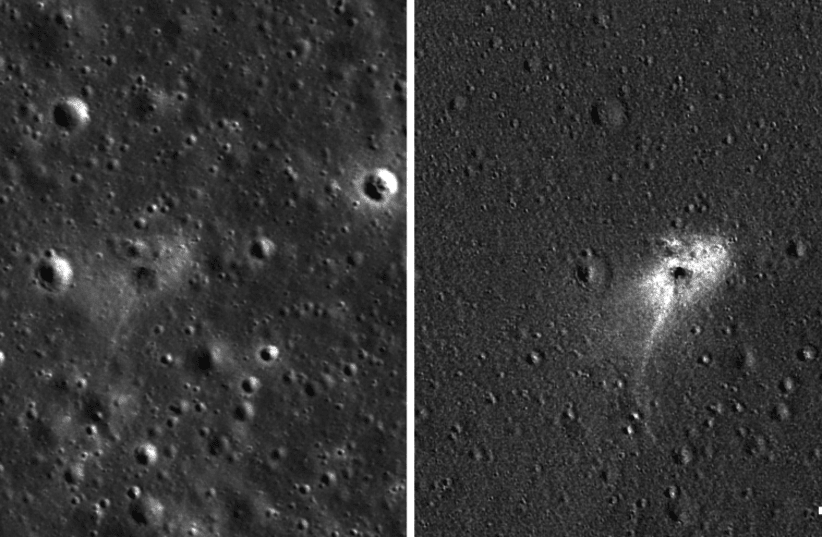The images show a "dark smudge," about 10 meters wide, that indicates the point of impact, according to the NASA press release. The dark tone suggest a surface roughened by the hard landing.Yes, we scratched the Moon alright!Thank you @LRO_NASA team for the images.#Beresheet @TeamSpaceIL source: https://t.co/QU240pCfKv pic.twitter.com/UARF4vkZ7A
— Yoav Landsman (@MasaCritit) May 15, 2019
The LRO could not detect whether Beresheet formed a surface crater on impact. It could be that the crater is too small to show up, or that Beresheet formed a small indent instead of a crater.
The halo seen in the images could be from gas associated with the impact or from fine soil particles blown outward by Beresheet's descent.The location of the impact was determined by examining the crater to see if it was man-made or caused by meteoroids. NASA also used the coordinates from Beresheet's radio tracking and examined before and after images of the site around the time of impact.According to a preliminary investigation conducted by SpaceIL, a command intended to correct a malfunction in one of the Beresheet spacecraft’s inertial measurement units led to a chain of events that turned off its main engine during landing.The malfunction occurred only minutes before Beresheet, developed in partnership with Israel Aerospace Industries, was due to complete a historic landing after a 6.5 million km. journey since it blasted off from Cape Canaveral, Florida, on board a SpaceX rocket on February 22.While the spacecraft attempted to restart its engine several times, the attempts proved unsuccessful, making a crash landing on the moon inevitable.The results of the full investigation into the crash are expected to be published later this month.NASA's LRO entered lunar orbit in 2009 and has returned a wide variety of data about the moon, including temperature maps and high resolution color imaging.Eytan Halon contributed to this report.
